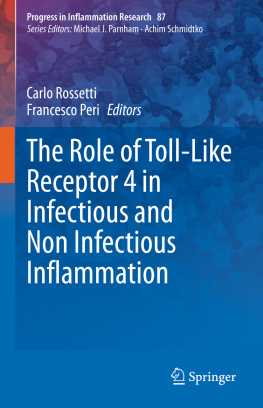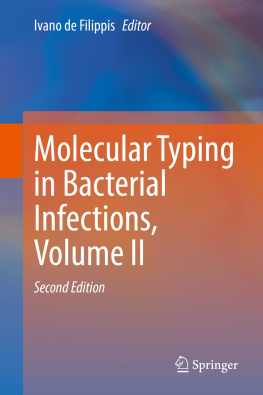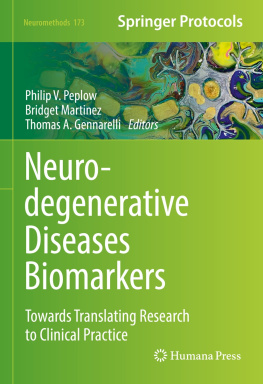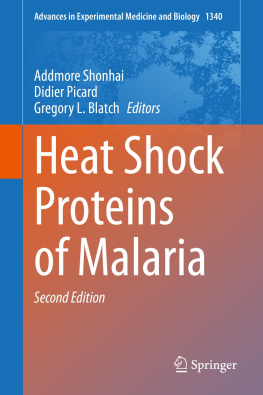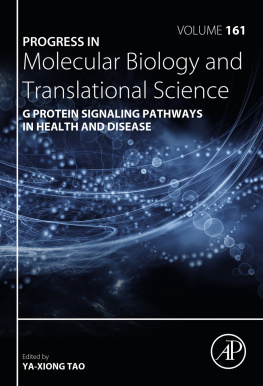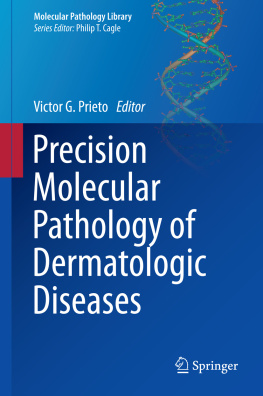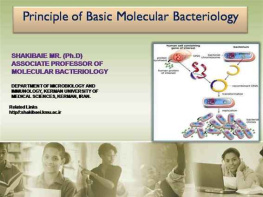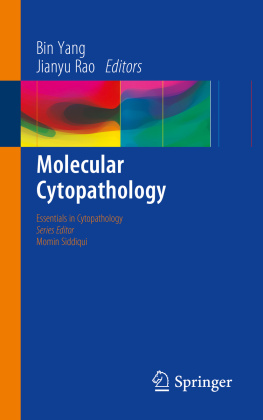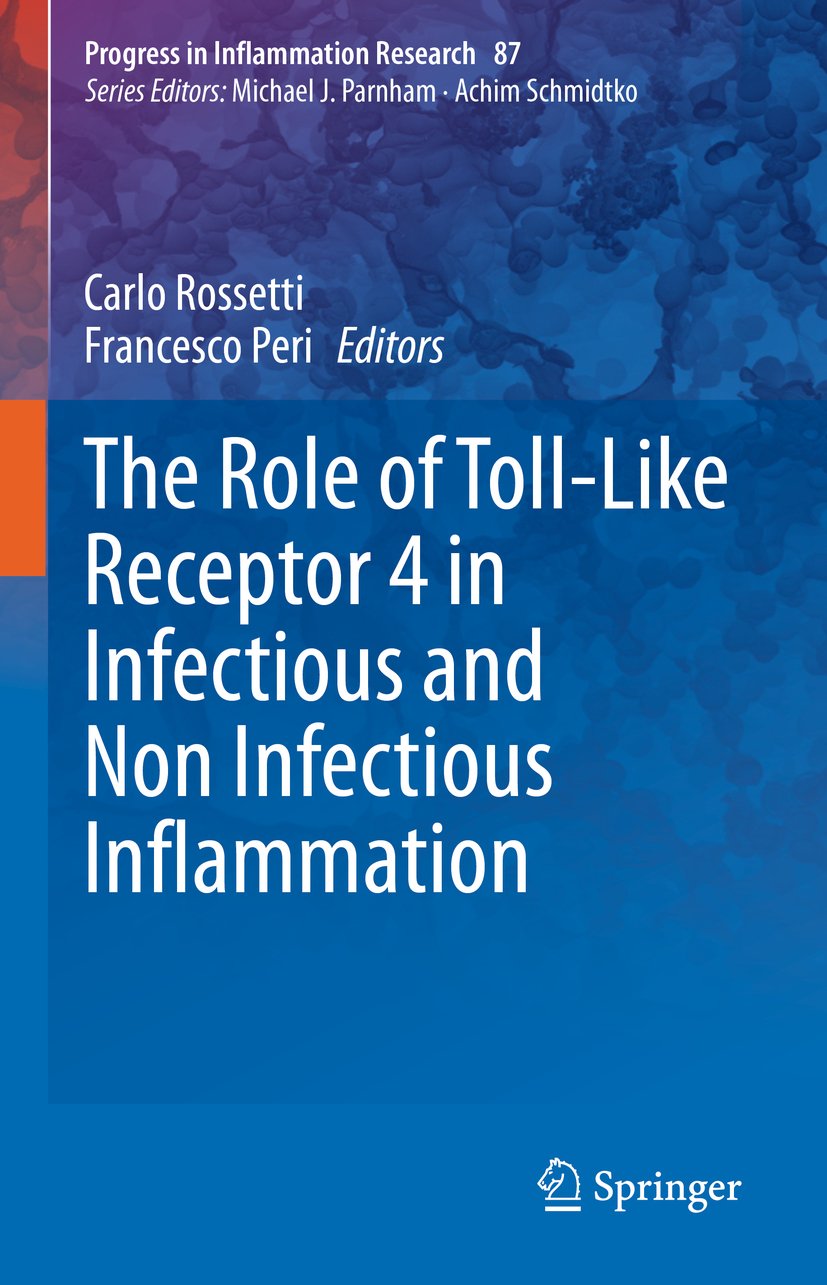Volume 87
Progress in Inflammation Research
Series Editors
Michael J. Parnham
Inst of Clinical Pharmacology, Goethe University Frankfurt, Frankfurt am Main, Germany
Achim Schmidtko
Inst Pharmacology and Clinical Pharmacy, Goethe University Frankfurt, Frankfurt am Main, Germany
The last few years have seen a revolution in our understanding of how blood and tissue cells interact and of the intracellular mechanisms controlling their activation. This has not only provided multiple targets for potential anti-inflammatory and immunomodulatory therapy, but has also revealed the underlying inflammatory pathology of many diseases.
This series provides up-to-date information on the latest developments in the pathology, mechanisms and therapy of inflammatory disease. Areas covered include: vascular responses, skin inflammation, pain, neuroinflammation, arthritis cartilage and bone, airways inflammation and asthma, allergy, cytokines and inflammatory mediators, cell signalling, and recent advances in drug therapy.
Each volume is edited by acknowledged experts providing succinct overviews on specific topics intended to inform and explain. The series is of interest to academic and industrial biomedical researchers, drug development personnel and rheumatologists, allergists, pathologists, dermatologists and other clinicians requiring regular scientific updates.
More information about this series at http://www.springer.com/series/4983
Editors
Carlo Rossetti and Francesco Peri
The Role of Toll-Like Receptor 4 in Infectious and Non Infectious Inflammation
1st ed. 2021
Editors
Carlo Rossetti
Department of Medicine and Surgery, University of Insubria, Varese, Italy
Francesco Peri
Department of Biotechnology and Biosciences, University of Milano Bicocca, Milan, Italy
ISSN 0379-0363 e-ISSN 2296-4517
Progress in Inflammation Research
ISBN 978-3-030-56318-9 e-ISBN 978-3-030-56319-6
https://doi.org/10.1007/978-3-030-56319-6
Springer Nature Switzerland AG 2021
This work is subject to copyright. All rights are reserved by the Publisher, whether the whole or part of the material is concerned, specifically the rights of translation, reprinting, reuse of illustrations, recitation, broadcasting, reproduction on microfilms or in any other physical way, and transmission or information storage and retrieval, electronic adaptation, computer software, or by similar or dissimilar methodology now known or hereafter developed.
The use of general descriptive names, registered names, trademarks, service marks, etc. in this publication does not imply, even in the absence of a specific statement, that such names are exempt from the relevant protective laws and regulations and therefore free for general use.
The publisher, the authors and the editors are safe to assume that the advice and information in this book are believed to be true and accurate at the date of publication. Neither the publisher nor the authors or the editors give a warranty, expressed or implied, with respect to the material contained herein or for any errors or omissions that may have been made. The publisher remains neutral with regard to jurisdictional claims in published maps and institutional affiliations.
This Springer imprint is published by the registered company Springer Nature Switzerland AG
The registered company address is: Gewerbestrasse 11, 6330 Cham, Switzerland
Preface
Toll-like receptors (TLRs) are essential regulators of innate and adaptive immune responses and their complexity continues to intrigue researchers, including the authors of this book. Because of their importance, when they are mutated and not functioning as they should, autoimmune, inflammatory, and infectious diseases can develop.
The aim of this book is to present an update on the role of TLR4, the most studied TLR, in inflammatory and infectious diseases with special focus on central nervous system (CNS) pathologies.
We also give an outlook on what emerged in the past years on the molecular aspects of extracellular TLR4 activation and intracellular signaling, its regulation by miRNA, and crosstalk with other metabolic pathways.
To this end, a group of internationally recognized experts has kindly accepted to present recent results on TLR4 function and role in health and disease.
TLR4 was the first TLR identified by Medzhitov and coworkers in 1997 and was then characterized by Beutler and coworkers as a pattern recognition receptor. TLR4 has an exquisite ligand selectivity that has remained largely unchanged through the course of evolution allowing for an immediate and sensitive response to gram-negative bacterial lipopolysaccharide (LPS).
The understanding of molecular features of extracellular TLR4 activation has contributed to unravel the physiological and pathological role of TLR4. We have now information on the structural biology of the molecular actors of LPS transfer: LBP and CD14 proteins, the M-shaped dimeric (TLR4-MD2-LPS)2 complex, and of the intracellular signaling proteins, belonging to the so-called MyD88-dependent and MyD88-independent pathways. The LPS-binding protein CD14 not only takes part in LPS extraction from aggregates in solution and shuttling to TLR4/MD-2/LPS dimer, but it also exerts autonomous functions by regulating endocytic processes or by activating dedicated signaling pathways, as critically reviewed by M. Di Gioia and I. Zanoni.
Starting from the knowledge of the supramolecular interactions among LPS and LBP, CD14 and MD-2, the structureactivity relationship of TLR4 ligands, especially of lipid A variants, has been extensively studied. These studies allow the structure-based rational design of synthetic or semisynthetic lipid A variants as vaccine adjuvants as reviewed by A. Shimoyama and K. Fukase.
Natural TLR4 ligands, LPS and LOS, and their synthetic variants are amphiphilic molecules that aggregate in solution. A. B. Schromm and K. Brandenburg discuss from a biophysical perspective the most recent achievements in the study of the role of aggregates in the biological activity of TLR4 ligands, with special focus on the very recent findings on LPS interaction with intracellular caspases and subsequent induction of the non-canonical inflammasome.
To complete the complex and fascinating view of TLR4 signaling at a molecular level, N. Kuzmich dissected from the structural biology point of view the two distinct intracellular pathways activated upon TLR4 dimerization: the MyD88-dependent pathway and the TRIF/IRF3 pathway leading to interferon production. He discussed the molecular events including phosphorylation and ubiquitination that allow the regulation of the pathways.
Septic shock or excessive inflammation are possibly the most severe outcomes due to inadequate negative regulation of TLR4 signaling leading to excessive pro-inflammatory cytokine production. Similarly, TLR4 excessive stimulation by endogenous molecules derived from necrotic or damaged tissues (danger-associated molecular patterns, DAMPs) has been associated to a wide array of inflammatory and autoimmune diseases, including neuroinflammations and vascular inflammations.
In this perspective, M. Christodoulides reviewed the molecular mechanism of

